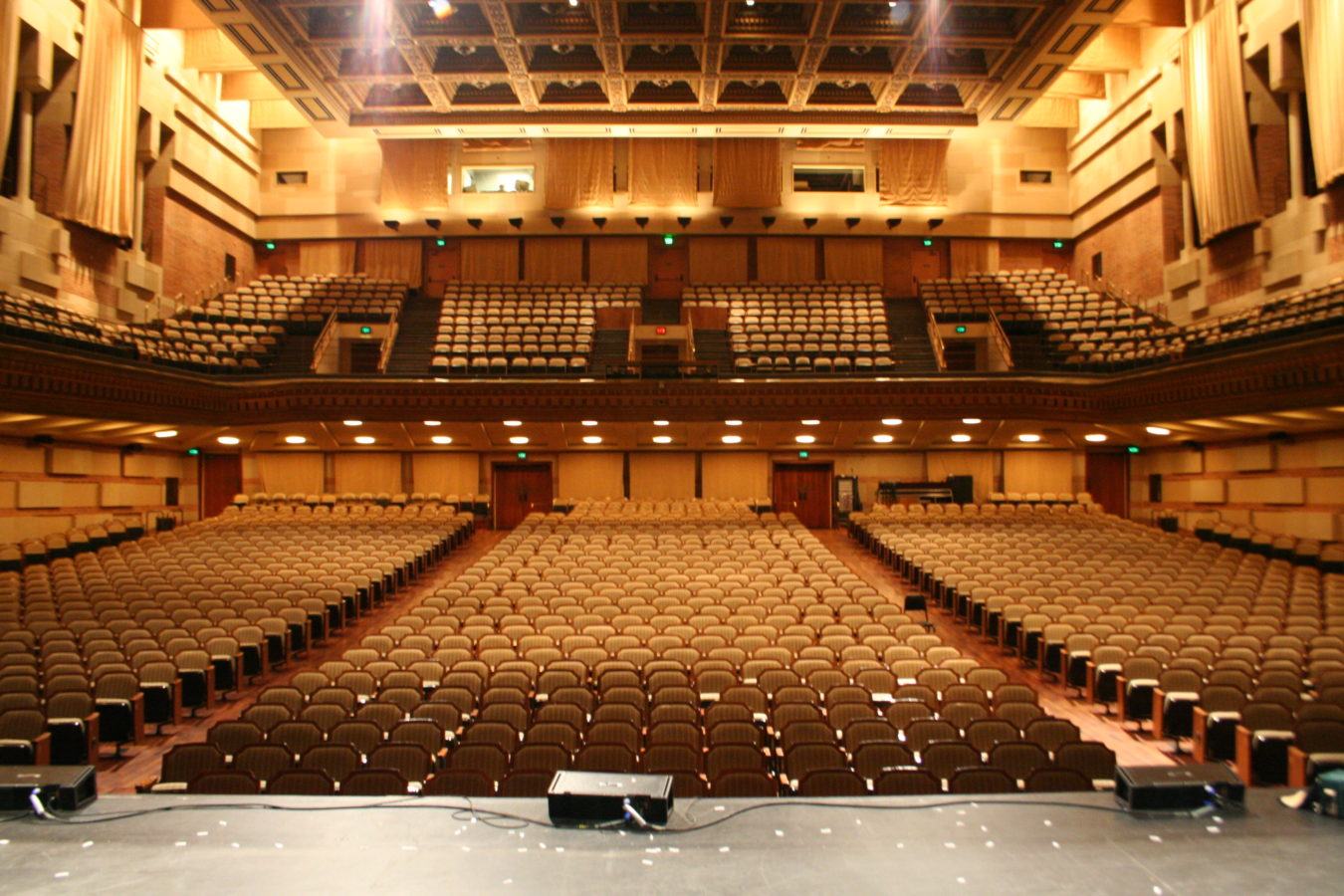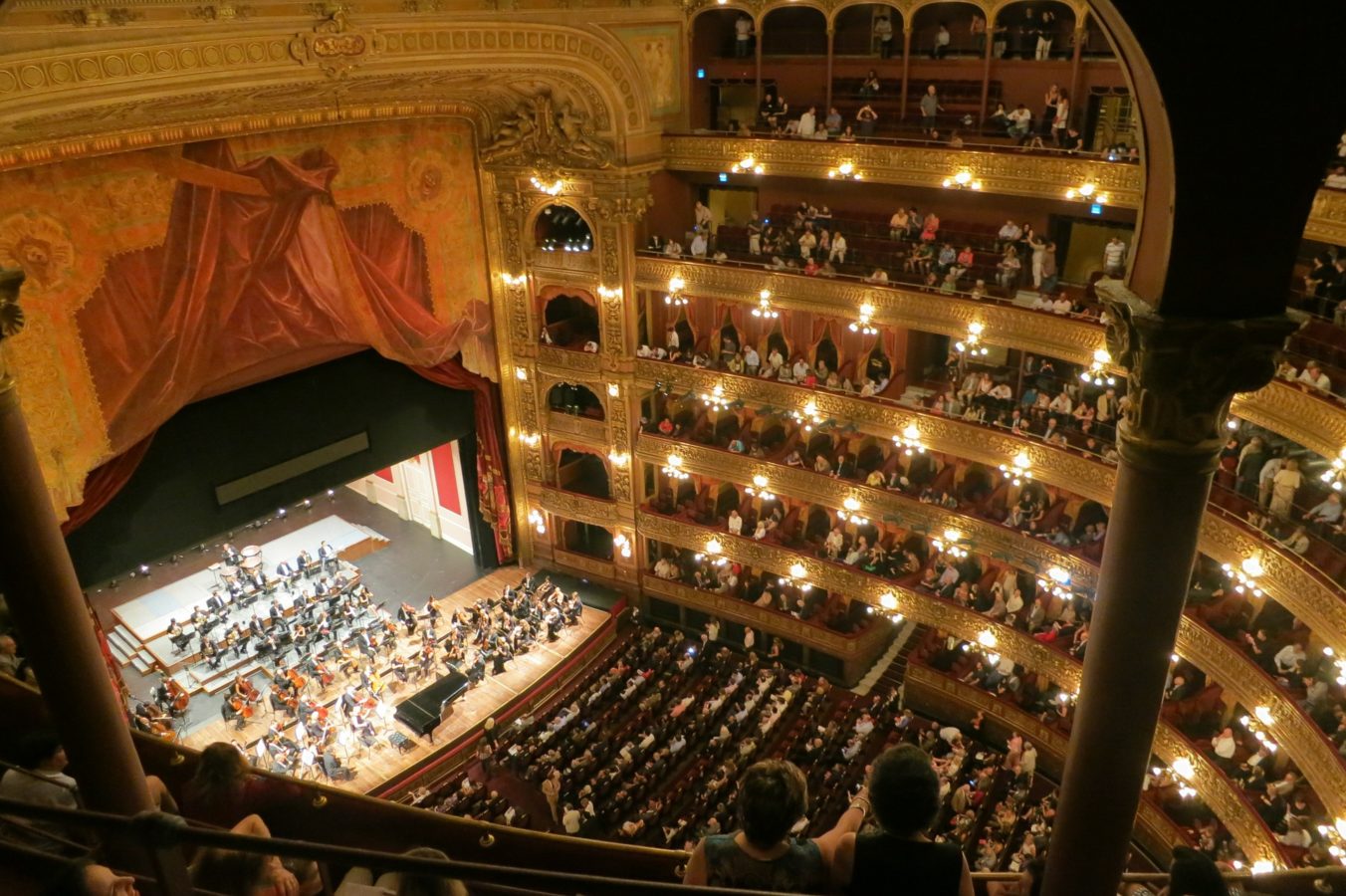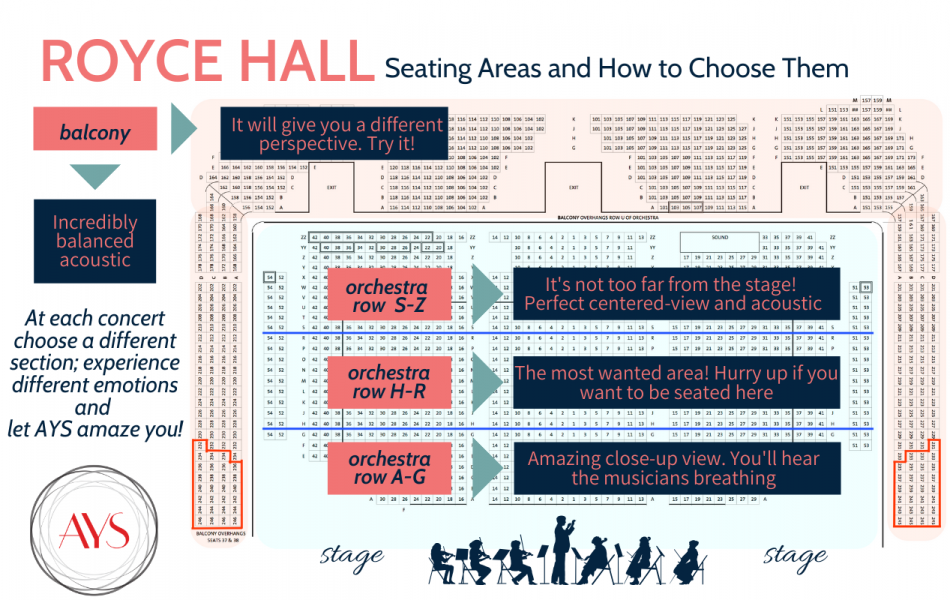Royce Hall Seating Areas and How to Choose Them
- Posted by - American Youth Symphony
- on -
- 0 Comment

By Giulia Chetta, AYS Intern
“Have you been to Royce Hall before? Do you have a favorite section? Would you rather stay in the Balcony or down below, in the Orchestra area?”
If you ever called our office to reserve seats for our free concerts, then you have definitely been asked those questions! Were they easy to answer? Or did you feel uncomfortable with them? If the answer to the first question was “yes”, then you might know what we are talking about, but if you are new to Royce Hall, then you may feel disorientated. Also, even if you came to Royce Hall before, you might not be perfectly familiar with the different areas and making a choice with confidence could turn out to be a demanding task. But don’t get stressed! We’re here to help you!
In this article, I will share historical facts (fun facts! Don’t get scared!) about the architecture of concert halls and theaters, as well as guidance on how to choose one section rather than another. After that, we’ll go back to our concert venue, Royce Hall, and I’ll reveal which are the best seats! Ready? Let’s get started!
Royce Hall is an 1800-seat auditorium built in 1929 and renovated in 1998 after being severely damaged in the 1994 Northridge earthquake. The main hall comprises the stage, where representations take place, and two areas for the audience: the Orchestra section and the Balcony. This architecture was not the one adopted by the first concert halls. Originally, concerts used to be performed in private houses. Noble families and mecenas hosted composers and performers as a form of private entertainment or as a symbol of social status. The first concert hall to be built was the Holywell Room opened in 1748 at Oxford. The structure of Holywell Room is known as “shoe box,” a rectangular shape with no distinction between Orchestra and Balcony. To find such a distinction we have to look back at the Baroque Opera Theater, or Italian Opera Houses, which set the model for the subsequent theaters throughout Europe.

Italian Opera Houses were like apartment buildings. (Here comes the funny part!) Theaters were U-shaped buildings with several levels of boxes (balconies antecedents) all around. Boxes were similar to small living rooms with their windows facing the stage and the Orchestra. People attending the performances were not only interested in music, but also in meeting friends or new people, making businesses, planning political actions or secretly spending a couple of hours with their lover! To meet each of these needs, there was the most suitable location inside the theatre. First of all, the Orchestra section was the cheapest one and there were no chairs. It was crowded and loud: not the best area at all. Boxes were much more desirable. People who wanted to be seen used to book lower boxes (first 2 levels), which were perfect for visibility. On the contrary, upper boxes were ideal for not being seen. People who needed to keep their presence secret could easily hide themselves in the shadow of the less exposed boxes. Why would they do so? Well, maybe they were important people and it was not advisable for them to appear in public for security reasons. Likewise, someone who wanted to spy on others would definitely book one of the upper boxes! Strange reasons to choose a seat at the theatre, right? During the 18th and 19th century very few people had acoustic in mind! Obviously, things have changed a lot throughout centuries and nowadays the main concern is music. Audience want to secure the best seats that allow them to have both perfect acoustic and view of the stage.


Here are the secrets of Royce Hall: Royce Hall has a great acoustic and the audience can entirely see the stage from almost all the seats, both from the Orchestra and the Balcony. So… there’s not just one single best area! It’s a matter of preference! And yes, it’s totally subjective.
- Are you interested in having a close-up look of the musicians? Feeling them breathe and having control over the conductor’s gestures? Then you’ll definitely want to be seated in the Orchestra, row A to G. Consider: you’ll be very close to the stage and the sound will not have time and space to amalgamate enough. You might hear very well the section you have in front of you, especially the string sections. As you get to row G the acoustic will be more homogenous but you’ll probably need binoculars to see musicians’ hands and expressions.
- The central area of the Orchestra is usually the most requested, and for the right reasons! If you manage to find a free seat from row H to R, then you’re very lucky because those rows are the ones that get sold out first. Acoustic is great and you have an amazing perspective of the stage (even if you’re not seated right in the center, but more on the side). Consider: there’s a possibility to have a tall person seated right in front of you which may partially obstacle the view. You’ll have a full-centered view rather than a close-up view.
- Back rows, from S to Z are my favorite!! Don’t be afraid of being too far from the stage. Royce Hall is not that big at all. It is small enough to still feel connected to the stage even from the back rows. From there you’ll still have a perfect full-centered view of the stage and the sound will be even more amalgamated. Consider: you won’t be able to see musicians faces or expressions as from the front rows.
- Balcony gives you a different perspective of the stage, which is still amazing. I warmly suggest to try and sit there at least once and have a different experience of the concert. You will be able to see every single musician, even those who are in the back rows. You’ll be able to distinguish all the different sections and each single instrument. Isn’t it amazing? Once more, acoustic is great. The sound goes up to the ceiling and bounces off the top panels. Balcony audience will enjoy a clear sound that comes together perfectly. Consider: if you sit in the first 2 rows, you may have your view obstructed from the safety barrier. Balcony side seats require sense of adaptation. You’ll need to turn your body towards the stage to feel more comfortable, but you’ll be closer to the stage (while the central Balcony seats are more distant).

Here’s the secret: there’s no one perfect seat! I recommend that you try to choose a different section every time you attend a concert; let your body and mind experience different emotions and let AYS amaze you! And, if you want to find out which is the best area for you, then focus on your priorities when listening to concerts.
I hope you find this article to be helpful and acts as a guide for the next time you reserve your seats for an AYS concert!

About Giulia:
Giulia Chetta is a graduate student in Arts Management from the University of Bologna, Italy. She has a rich background in music. In 2013 she graduated in Piano performance from the Conservatory of Trieste. She worked for 4 years as a Piano teacher as well as an Artistic Director Assistant at the Chamber Music Association in Trieste, Italy. In the meanwhile, she took a degree in Foreign Literatures (English and Spanish). Eventually, she decided to follow the Arts Management path and she started a Master Degree in Cultural Economics. Since, she has worked for several music organizations both in Italy and in the United States. She was a Production Assistant for the Piccolo Opera Festival in Italy, Arts Administration intern for the Lake George Music Festival in New York, and Administrative Intern for the American Youth Symphony.

